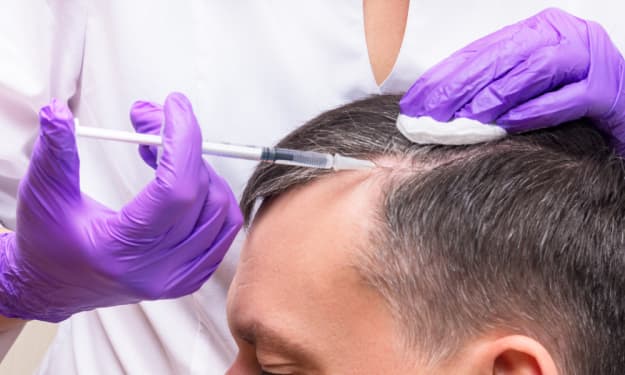What factors affect the effectiveness of PRF and PRP treatments?
Factors of platelet-rich fibrin vs. Platelet-Rich Plasma

In regenerative medicine, the debate rages on PRF vs. PRP—two stalwarts of therapeutic interventions, each harnessing the potent potential of blood components. Platelet-rich plasma (PRP) and fibrin (PRF) stand as distinct players in the regenerative field, captivating practitioners and patients alike. But which one emerges as the more effective protagonist?
Platelet-rich plasma, often heralded as a pioneer in regenerative treatments, enriches plasma with a heightened concentration of platelets, growth factors, and cytokines. Its versatility finds application across diverse medical and cosmetic arenas, promising accelerated healing and tissue rejuvenation.
Platelet-rich fibrin, a relative newcomer, intrigues with its fibrin matrix, conferring sustained release of growth factors. This intricate scaffold, meticulously crafted from the patient's own blood, presents unique advantages in tissue repair and regeneration.
When dissecting the efficacy conundrum of PRF vs. PRP, it's imperative to consider diverse factors: patient-specific variables, procedural nuances, and the targeted outcome. The comparison extends beyond conventional notions of "better" and delves into the nuanced interplay of these bioactive blood derivatives.
Ultimately, the choice between PRF and PRP pivots on the specific clinical context and desired therapeutic outcomes. A decision, oftentimes forged through collaborative discourse between informed patients and astute healthcare providers.
In the medical arena, Platelet Rich Plasma (PRP), with its rapid action and versatility, commands a strong presence. It has demonstrated remarkable efficacy in applications such as orthopedic interventions, wound healing, and platelet rich plasma injections for hair loss near me
. The high concentration of platelets, brimming with growth factors, works in favor of accelerated tissue regeneration.
On the flip side, Platelet Rich Fibrin (PRF) introduces a more intricate narrative. Its fibrin-based matrix, formed through a controlled centrifugation process, exhibits a slow-release mechanism. This unique attribute presents a compelling case in situations where a sustained supply of growth factors can enhance healing over time. PRF often shines in oral surgery, periodontal treatments, and facial aesthetics.
Digging deeper into the debate, it becomes apparent that the question of prf vs prp for face does not yield a one-size-fits-all answer. Instead, it hinges on specific clinical objectives, patient profiles, and the strategic orchestration of regenerative potential.
In the grand symphony of regenerative medicine, both PRF and PRP hold their respective notes. The choice between them is akin to selecting the right instrument for a musical performance—a decision that necessitates careful consideration, guided by the expertise of healthcare practitioners, to achieve the harmonious blend of biology and healing.
Side effects or risks associated with PRF and PRP?
Both Platelet Rich Fibrin (PRF) and Platelet Rich Plasma (PRP) therapies are generally considered safe and well-tolerated. However, there are possible risks and side effects to be aware of, just like with any medical procedure:
1. Infection: The likelihood of infection at the injection site is low, particularly if suitable sterile techniques are not used.
2. Pain and Discomfort: May suffer some pain, edema, or discomfort. This is usually temporary and can be managed with over-the-counter pain medications.
3. Bruising: Injection of PRF or PRP may cause bruising, particularly in individuals with a tendency to bruise easily. Bruises typically resolve on their own within a few days to a week.
4. Allergic Reactions: Allergic reactions are extremely rare since PRF and PRP are derived from the patient's own blood. However, in very rare cases, individuals may have an allergic reaction to materials used during the preparation or application of the treatments.
5. Nerve or Blood Vessel Damage: Incorrect injection techniques or anatomical variations could potentially lead to nerve or blood vessel damage.
6. Inadequate Results: The effectiveness of PRF and PRP treatments can vary from person to person. Some individuals may not experience the expected level of improvement in their condition.
7. Inflammation: In some cases, there may be localized inflammation at the injection site. This is usually a part of the healing process and resolves on its own.
What factors affect the effectiveness of PRF and PRP treatments?
The performance of Platelet Rich Fibrin (PRF) and Platelet Rich Plasma (PRP) treatments can be influenced by various factors:
1. Patient-Specific Variables:
• Age: Younger patients often respond more favorably to regenerative therapies.
• Overall Health: The patient's general health and immune function can impact healing and treatment outcomes.
• Underlying Conditions: The nature and severity of the underlying medical condition being treated play a significant role.
• Lifestyle Factors: Diet, exercise, and lifestyle choices can affect healing and treatment results.
2. Treatment Timing:
• The stage at which the therapy is administered in the course of an injury or condition can affect its effectiveness. Early intervention often yields better results.
3. Preparation Techniques:
• The method used to prepare PRF and PRP can vary among providers. Proper centrifugation and processing techniques are critical to concentrate platelets and growth factors effectively.
4. Concentration of Platelets and Growth Factors:
• Achieving the right concentration of platelets and growth factors in the PRF or PRP solution is crucial. Higher concentrations may not always lead to better results, and the optimal ratio can vary based on the condition being treated.
5. Injection Technique:
The success of the treatment can be greatly influenced by the knowledge and expertise of the healthcare professional delivering it.
• Proper injection into the target area is essential.
6. Patient Compliance:
• Adherence to post-treatment instructions, including rest, rehabilitation, and follow-up appointments, can affect outcomes.
7. Underlying Tissue and Condition:
• The type of tissue being treated and the specific medical condition can influence the effectiveness of PRF and PRP. Some tissues may respond better than others.
8. Individual Variation:
• Each person's body may react differently to regenerative therapies, making it challenging to predict precise outcomes.
9. Coexisting Factors:
• The presence of other medical issues or medications may interact with PRF and PRP treatments, either positively or negatively.
10. Repeat Treatments:
• In some cases, multiple sessions of PRF or PRP therapy may be needed to achieve the desired results.
It's essential for healthcare providers to carefully assess each patient's unique circumstances and tailor the treatment plan accordingly. Patient expectations should also be aligned with realistic outcomes, as regenerative therapies may not guarantee complete resolution of all conditions.
About the Creator
Harbor Compounding pharmacy
Harbor Compounding Pharmacy in California to provide better health solutions. The aim of this health pharmacy is to provide solutions to all health-related issues. It provides treatment for all diseases and health counseling.






Comments
There are no comments for this story
Be the first to respond and start the conversation.